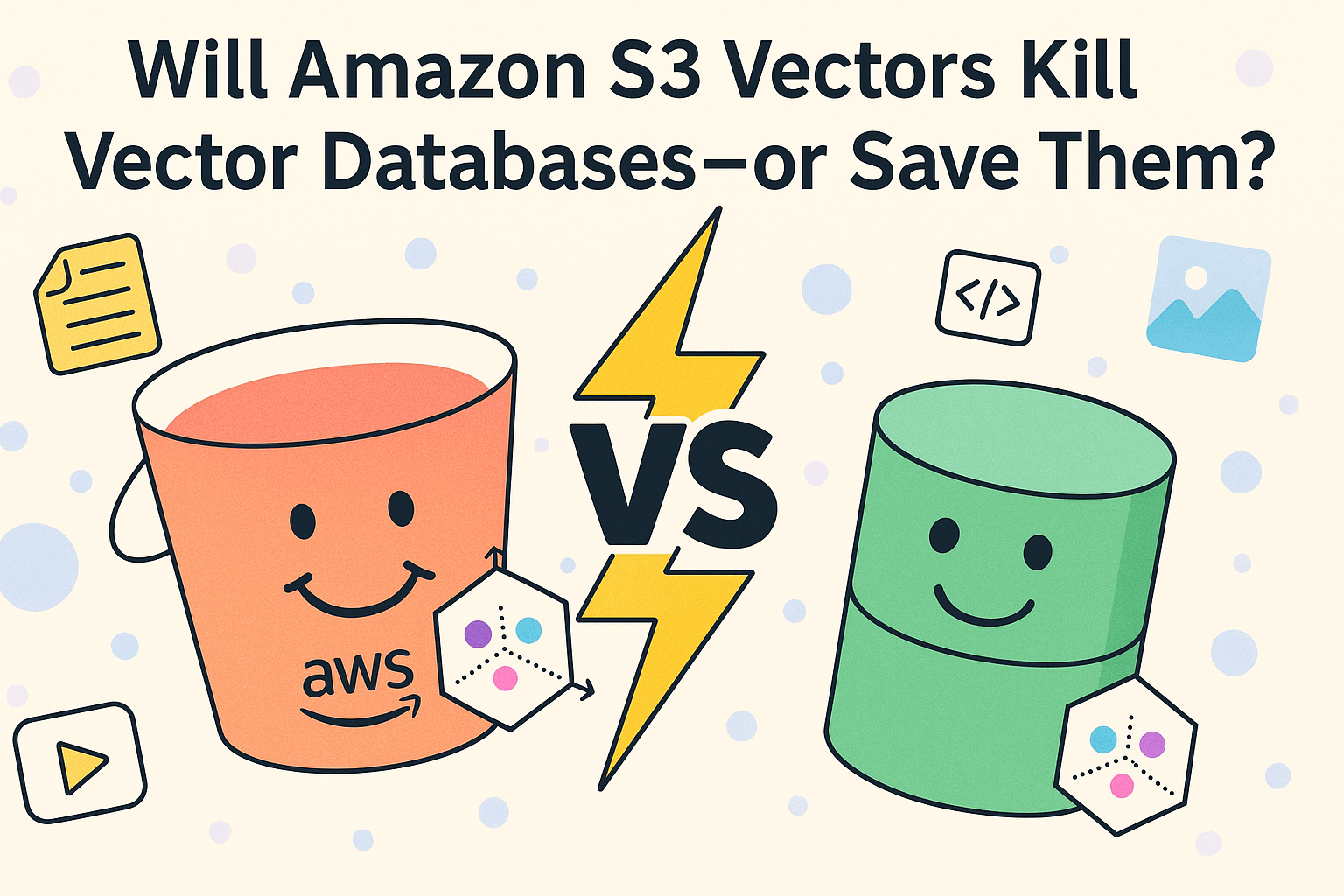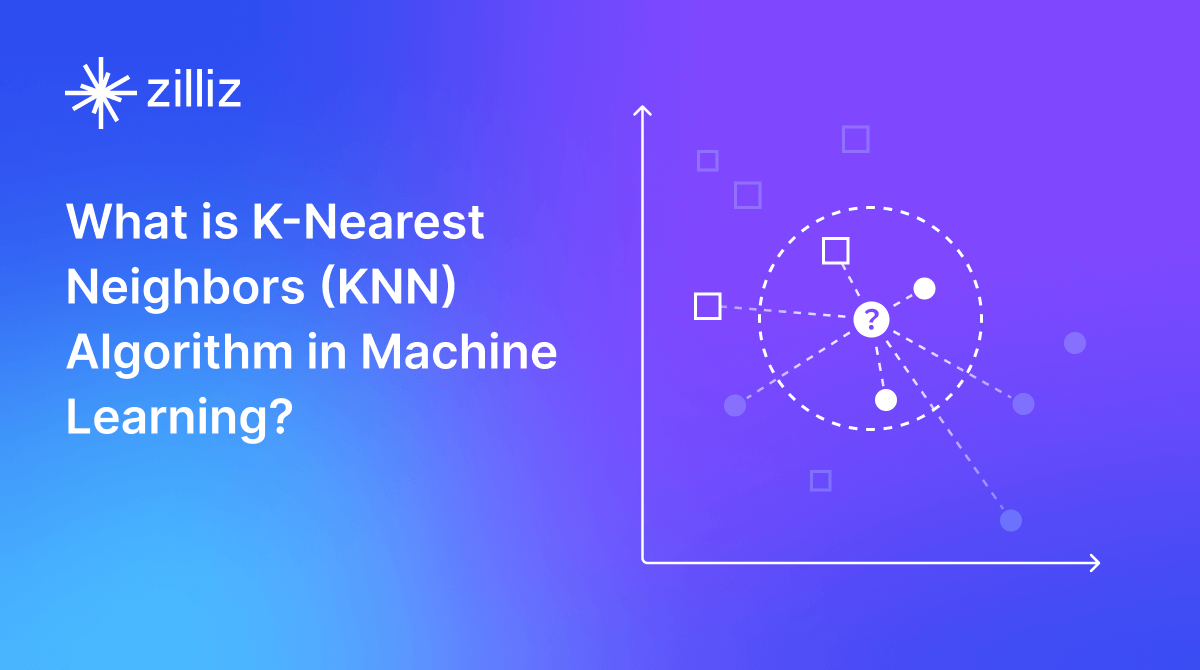How AI and Vector Databases Are Transforming the Consumer and Retail Sector

AI and vector databases are revolutionizing the consumer and retail sector, unlocking new opportunities for personalized shopping experiences, efficient operations, and smarter decision-making. From enhancing search relevance to automating customer service, this article explores how retailers can leverage AI-driven solutions like Zilliz Cloud to stay ahead of the curve, streamline their processes, and drive long-term growth. Ready to embrace the future of retail? Let’s jump in.
Introduction
The consumer and retail sector is undergoing a significant transformation as artificial intelligence (AI) reshapes how businesses operate. From personalized recommendations to supply chain optimization, AI-powered solutions are enhancing efficiency and improving customer experiences. A McKinsey report (Source: LLM to ROI: How to scale gen AI in retail) estimates that generative AI alone could unlock between $240 billion to $390 billion in economic value for retailers, equivalent to a 2X margin increase across the industry (McKinsey, 2024). At the heart of this transformation are vector databases, which enable advanced AI applications like semantic search, personalized recommendations, and intelligent customer service.
Current State & Challenges in Retail
Retail is undergoing a transformation as AI, particularly generative AI, bridges the gap between physical and digital shopping experiences. Traditionally, in-store shopping has been more engaging and personalized than its e-commerce counterpart. However, both experiences often fall short of true personalization, with too much noise and irrelevant content bombarding customers. Generative AI can help alleviate this challenge, making both in-store and online shopping more intuitive and tailored to individual needs. Many retailers have a vision for personalizing their customer journeys but struggle to execute it because they lack the right infrastructure and processes. Without efficient search or personalization, delivering on this vision becomes impossible.
Retailers face several key challenges, including:
Data Silos: Customer, inventory, and transaction data are often fragmented across multiple systems, making it difficult to derive insights.
Manual Processes: Traditional methods for managing customer inquiries, supply chains, and inventory control are time-consuming and prone to errors.
Inefficient Search & Discovery: Keyword-based search engines often fail to surface relevant products, leading to poor customer experiences.
Personalization Gaps: Without deep understanding of customer preferences, retailers struggle to provide tailored recommendations.
Generative AI adoption is accelerating rapidly, with 65% of organizations now regularly using it, nearly double the percentage from just ten months ago (McKinsey, 2024). For retailers, this rapid shift signals a crucial opportunity—those who fail to adopt AI solutions risk falling behind competitors who are leveraging these technologies to drive efficiencies, enhance customer personalization, and optimize operations.
AI is no longer emerging—it’s here. Retailers must act now to stay competitive, improve customer experiences, and streamline processes. Delaying adoption means losing ground in an increasingly AI-driven market, where innovation and agility are key to long-term success.
How AI & Vector Databases Help
As retailers navigate the complexities of data fragmentation, inefficient search, and personalization gaps, they are not just facing operational challenges—they are struggling to execute on their broader digital transformation goals. These issues are preventing them from delivering on their strategic vision to fundamentally transform the customer experience. The inability to create seamless, data-driven experiences is hindering progress toward innovation, customer engagement, and long-term growth. By leveraging AI and vector databases, businesses can overcome these barriers, better understand customer intent, optimize operations, and deliver the personalized experiences that are essential to staying competitive in the evolving retail landscape.
AI, powered by vector databases, is tackling these challenges head-on by:
Enhancing Search & Recommendations: Semantic search and vector embeddings improve product discovery, enabling customers to find relevant items even with vague or misspelled queries.
Automating Customer Support: AI-driven chatbots and virtual assistants provide instant, accurate responses based on past interactions and context.
Optimizing Inventory Management: Predictive analytics helps retailers maintain the right stock levels, reducing waste and avoiding shortages.
Personalizing Customer Journeys: AI can analyze vast amounts of behavioral data to recommend products tailored to individual preferences.
Future Outlook: The Next Wave of AI in Retail
As AI adoption accelerates, retailers are looking beyond efficiency gains and toward transformative applications that redefine customer engagement and operational strategy. The next wave of AI in retail will not only enhance personalization and automation but also introduce entirely new ways of interacting with products, optimizing supply chains, and predicting consumer demand. Innovations in multimodal AI, generative AI, and digital twin technology are set to reshape the industry, creating more immersive, intelligent, and responsive retail experiences.
Emerging trends shaping the retail sector include:
Multimodal AI: Combining text, images, and video to enhance search, recommendations, and customer interactions.
AI-Powered Supply Chains: Predictive analytics and AI-driven demand forecasting will further streamline operations.
Generative AI for Marketing & Merchandising: Retailers are using AI to create hyper-personalized marketing campaigns and automate content generation.
Retail Digital Twins: AI-driven simulations allow businesses to test strategies before deploying them in the real world.
Advancements in Vector Databases: Improved scalability and precision will enhance AI-driven personalization, real-time data integration, and multimodal processing for a more seamless customer experience.
According to McKinsey, the economic impact of generative AI across industries could reach $2.6 trillion to $4.4 trillion annually (McKinsey, 2023).
Benefits of AI in Retail
AI is transforming retail by bridging the gap between digital and in-store experiences, enabling businesses to create highly personalized and efficient customer journeys. According to Harvard Business Review (AI: The Secret to a Thriving E-Commerce Business), 90% of organizations recognize personalized experiences as critical to e-commerce success, making AI-powered solutions essential. From improving product recommendations to optimizing search accuracy, AI enables businesses to analyze vast amounts of customer data and anticipate preferences. AI-driven chatbots enhance customer service by reducing wait times and providing instant, accurate support, while generative AI streamlines content creation for product documentation and marketing. As more retailers integrate AI into their operations, they are unlocking new levels of efficiency, accuracy, and customer engagement.
Retailers implementing AI-powered solutions experience:
Faster Decision-Making: Real-time analytics allow businesses to respond quickly to market trends and consumer demands.
Increased Accuracy: AI minimizes human errors in inventory management, pricing, and demand forecasting.
Automation of Repetitive Tasks: Chatbots, automated checkouts, and smart logistics reduce labor costs and improve efficiency.
Cost Savings: AI-driven optimizations lead to reduced operational expenses and higher profit margins.
Case Study: AI-Powered Personalization in E-Commerce
Beni, a leader in sustainable fashion, manages over 200 million resale listings across 1,000+ fashion sites and 50+ marketplaces. Their challenge? Delivering fast, accurate, and personalized recommendations while handling 1 million daily listing updates and 20 queries per second. Traditional search methods struggled with incomplete metadata, inconsistent image quality, and real-time inventory changes. Google Vertex AI proved too costly, prompting Beni to seek a scalable and cost-effective alternative.
With Zilliz Cloud’s vector search, Beni achieved a 75% reduction in infrastructure costs while improving search relevance for both text and image queries. The platform’s hybrid search capabilities enabled contextual matching, helping shoppers discover secondhand fashion effortlessly. Real-time index updates ensured that recommendations remained accurate, keeping pace with the rapid turnover of resale inventory. By leveraging multi-modal embeddings, Beni transformed the shopping experience, making sustainable fashion more accessible and scalable than ever.
Recommendations for Adoption
To successfully implement AI-driven solutions, retailers must align their technology choices with business objectives while ensuring scalability and cost efficiency. A strong data infrastructure is crucial for AI applications, enabling seamless integration of vector search for personalization, recommendations, and search optimization. By leveraging vector databases like Zilliz Cloud, retailers can efficiently process vast product catalogs, enhance search relevance, and deliver real-time, AI-powered experiences. Prioritizing high-impact use cases—such as automated customer service, dynamic pricing, and tailored recommendations—ensures measurable ROI, while investing in AI expertise through vendor collaborations and internal upskilling drives long-term success.
Retailers looking to implement AI should:
Assess Data Infrastructure: Ensure high-quality, centralized data is available for AI applications.
Choose the Right AI Tools: Leverage vector databases like Zilliz Cloud to enable efficient search and retrieval.
Start with High-Impact Use Cases: Focus on customer service, personalization, and search optimization.
Invest in AI Talent & Partnerships: Collaborate with AI vendors and upskill internal teams to maximize AI adoption.
How Zilliz Cloud Helps
Zilliz Cloud provides a high-performance, enterprise-ready vector database tailored for AI-powered retail applications. With capabilities like:
Scalable Vector Search: Handle billions of vectors with sub-10ms latency.
Hybrid Search: Combine keyword and semantic search for superior product discovery.
Real-Time AI Integration: Seamlessly connect with LLMs and recommendation engines.
Retailers adopting AI-driven vector search with Zilliz Cloud gain a competitive edge in delivering personalized, efficient, and data-driven customer experiences.
By leveraging AI and vector databases, retailers can not only solve long-standing challenges but also unlock new growth opportunities. As AI adoption accelerates, businesses that invest in these technologies will be best positioned to thrive in the next era of retail innovation.
- Introduction
- Current State & Challenges in Retail
- How AI & Vector Databases Help
- Future Outlook: The Next Wave of AI in Retail
- Benefits of AI in Retail
Content
Start Free, Scale Easily
Try the fully-managed vector database built for your GenAI applications.
Try Zilliz Cloud for FreeKeep Reading

Will Amazon S3 Vectors Kill Vector Databases—or Save Them?
AWS S3 Vectors aims for 90% cost savings for vector storage. But will it kill vectordbs like Milvus? A deep dive into costs, limits, and the future of tiered storage.

What is the K-Nearest Neighbors (KNN) Algorithm in Machine Learning?
KNN is a supervised machine learning technique and algorithm for classification and regression. This post is the ultimate guide to KNN.

AI Video Editing Software: Revolutionizing Video Tech Through Intelligent Search and Automation
Learn how to build AI-powered video editing tools using CLIP, ResNet, and vector databases. Discover implementation steps for intelligent search, automated tagging, and scalable video processing.
